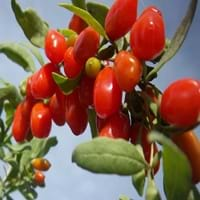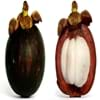Health Benefits
Anti-oxidant properties, Eye care, Helps in cartilage regeneration, Regulates Blood Sugar, Treatment of osteoarthritis
Cancer prevention, Cures gastro-intestinal troubles, Improves night vision, Improves stomach health, Prevents diabetes, Prevents high blood pressure, Reduces blood circulation problems
General Benefits
Boosts immune system, Digestive aid
Fights against infections, Helps in weight loss, Prevents blood clotting in vessels, Treatment of urinary tract infections
Skin Benefits
Anti-aging benefits, Reduces wrinkles, Treatment of skin diseases
Anti-aging benefits, Nourishes skin, Protects against skin damage
Hair Benefits
Protects hair, Regulates hair growth
Prevents hair loss
Allergy Symptoms
Anaphylaxis, Itching, Sneezing, Wheezing
Not Available
Side Effects
May interact with some drugs
Decrease in blood sugar levels, Diarrhoea, Dizziness, Headache, Internal bleeding, Stomach pain
Best Time to Eat
Any time except an hour after meal, Don't consume at night and before bed
As a snack in the late afternoon, Don't consume at night and before bed, Eat the fresh ones, avoid mixing with any other foods, don't eat after meal., Morning time (before lunch)
Vitamin B5 (Pantothenic Acid)
Vitamin C (Ascorbic Acid)
Vitamin K (Phyllochinone)
Phytosterol
Not Available
Calories in Fresh Fruit with Peel
Calories in Fresh Fruit without Peel
Not Available
Not Available
Calories in Frozen Form
Not Available
Calories in Dried Form
Not Available
Calories in Canned Form
Not Available
Not Available
Varieties
No Types
Dwarf bilberry, Piper, bog blueberry, Northern bilberry, Mountain bilberry and Oval-leaved bilberry
Color
Scarlet red
Dark purple
Inside Color
Orange
Light Green
Taste
Slightly bitter, Tart
Sweet
Soil Type
Well-drained
Moist, Well-aerated
Climatic Conditions
Cold, Hot
Cold
Facts about
- Study says a man named Li Qing Yuen used to eat goji berries daily and lived for 252 years.
- They are also known as wolfberries in India & China.
- This fruit is used for spiritual purposes at many places.
- Bilberries are used in manufacturing of alcoholic drinks.
- They are used to improve aromas of sorbets.
- The green extract of it's leaves is used in textile industry as natural dye.
Other Countries
Canada, France, India, United States of America
Denmark, Finland, Iceland, Sweden
Top Importer
United States of America
United States of America
Botanical Name
Lycium barbarum
Vaccinium myrtillus
Synonym
Wolfberry
blaeberry, whinberry, European blueberry, whortleberry
Subkingdom
Tracheobionta
Tracheobionta
Division
Unknown
Magnoliophyta
Class
Unknown
Magnoliopsida
Subclass
Asteridae
Dillenhidae
Family
Solanaceae
Ericaceae
Species
L. barbarum
Vaccinium myrtillus
Generic Group
Not Available
Heath
Difference Between Gojiberry and Bilberry
We might think that Gojiberry and Bilberry are similar with respect to nutritional value and health benefits. But the nutrient content of both fruits is different. Gojiberry and Bilberry Facts such as their taste, shape, color, and size are also distinct. The difference between Gojiberry and Bilberry is explained here.
The amount of calories in 100 gm of fresh Gojiberry and Bilberry with peel is 32.00 kcal and 44.00 kcal and the amount of calories without peel is Not Available and Not Available respectively. Thus, Gojiberry and Bilberry belong to Low Calorie Fruits and Low Calorie Fruits category.These fruits might or might not differ with respect to their scientific classification. The order of Gojiberry and Bilberry is Solanales and Ericales respectively. Gojiberry belongs to Solanaceae family and Bilberry belongs to Ericaceae family. Gojiberry belongs to Lycium genus of L. barbarum species and Bilberry belongs to Vaccinium genus of Vaccinium myrtillus species. Beings plants, both fruits belong to Plantae Kingdom.









